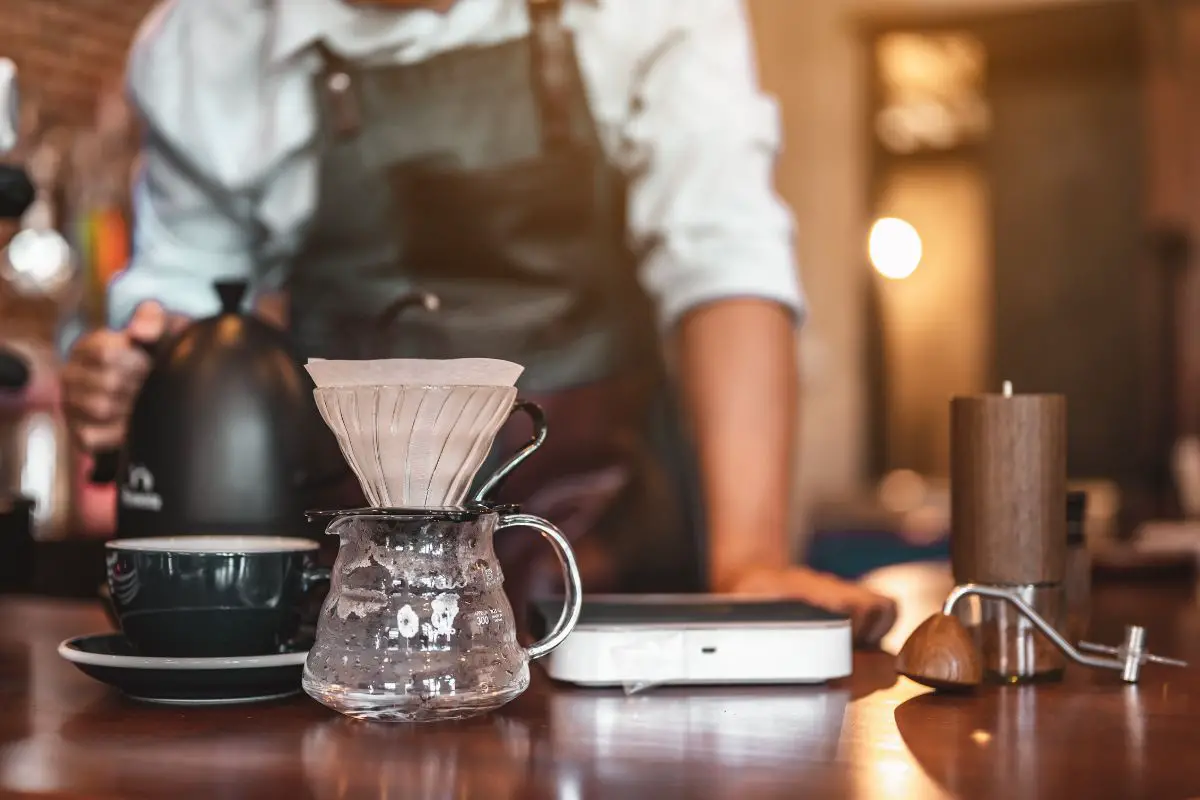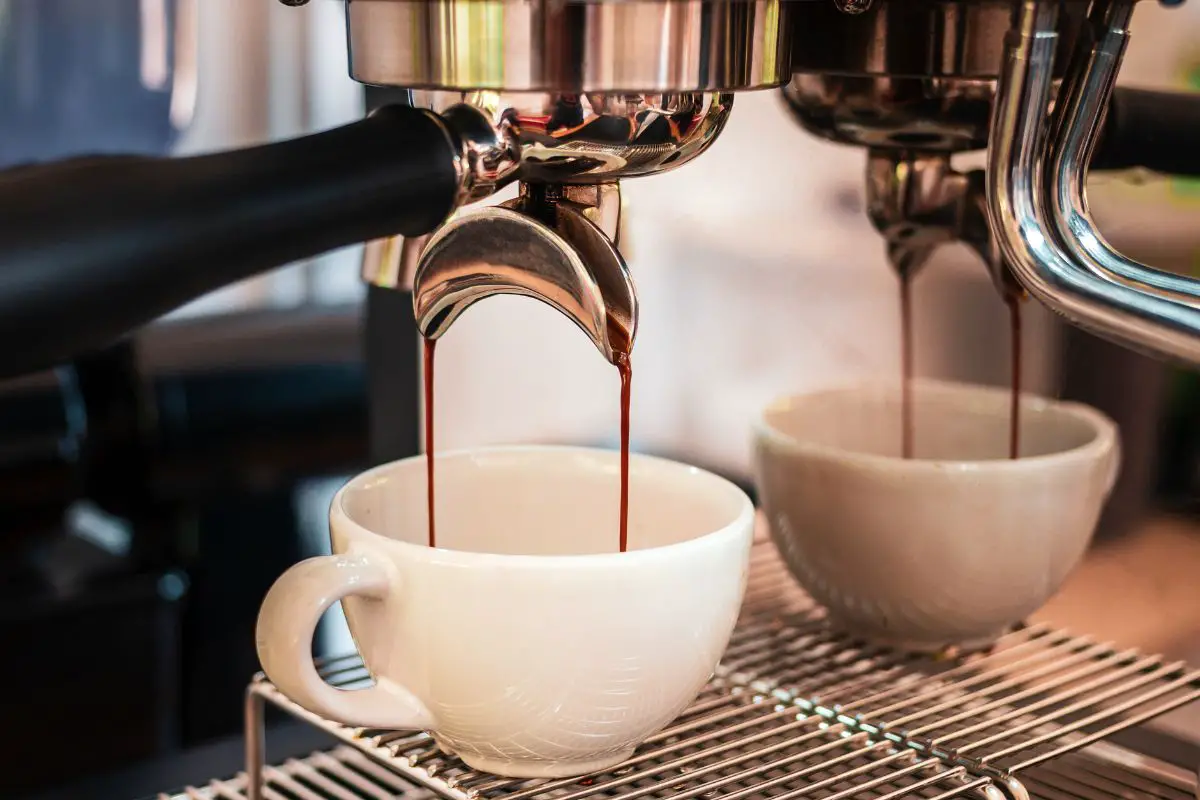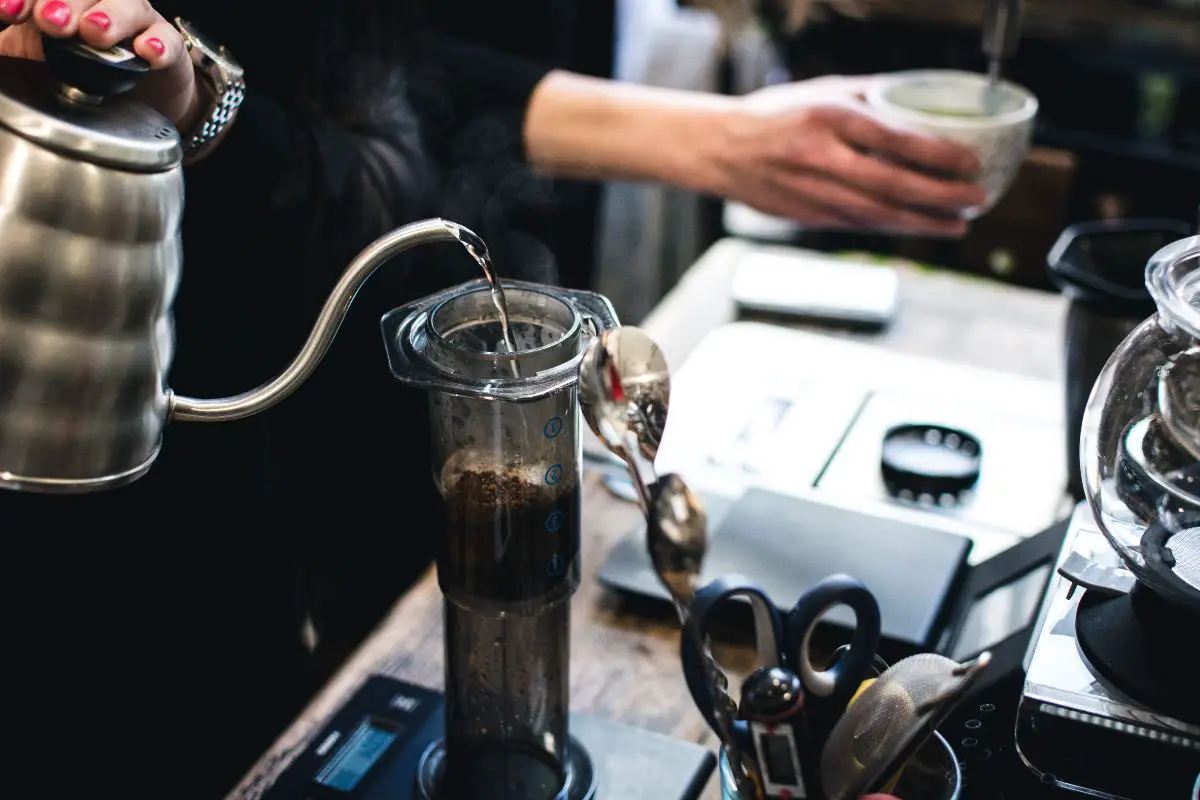Coffee extraction is a critical aspect of brewing coffee that often goes unnoticed by the average coffee drinker. However, understanding and measuring coffee extraction is essential for achieving the perfect cup of coffee. Whether you are a coffee enthusiast or a professional barista, being able to measure coffee extraction accurately can greatly enhance the quality and consistency of your brew.

In this article, we will explore the importance of coffee extraction, the various methods to measure it, and how to control extraction levels to achieve the desired taste profile. By delving into the intricacies of coffee extraction, you will be equipped with the knowledge and tools necessary to brew coffee that satisfies even the most discerning palate.
To begin, it is crucial to comprehend why coffee extraction is significant in the first place. Coffee extraction refers to the process in which water dissolves the soluble compounds in coffee grounds, extracting the desirable flavors and aromas. This extraction process heavily influences the taste, strength, and overall quality of the coffee. If under-extracted, the coffee may taste weak, sour, and lacking in depth. On the other hand, over-extracted coffee can result in a bitter, astringent, and unpleasant flavor.
Achieving the optimal extraction level allows for the extraction of the desirable compounds while minimizing the extraction of unwanted elements. This delicate balance is what creates a well-balanced, flavorful, and enjoyable cup of coffee. As a coffee lover, having the ability to measure and control coffee extraction will empower you to consistently brew coffee that delights your taste buds and provides a sense of comfort and satisfaction.
Key Takeaways
- A coffee refractometer is a valuable tool for coffee enthusiasts to achieve consistent taste profiles and improve brewing skills.
- Variables such as grind size, water temperature, and brew time can be adjusted to control the extraction level and manipulate the taste profile of coffee.
- Experimentation with extraction levels allows individuals to explore diverse flavors and characteristics of coffee, enhancing their enjoyment and improving their brewing techniques.
- Knowledge of the impact of extraction on coffee allows for informed decisions in adjusting variables to consistently achieve desired flavor profiles.
Understand the Importance of Coffee Extraction
The understanding of coffee extraction is crucial as it directly correlates to the quality and taste of the final brewed coffee.
Coffee extraction refers to the process of dissolving the desirable compounds from the coffee grounds into the water during brewing. It is a delicate balance between extracting the right amount of flavors and avoiding over-extraction, which can lead to a bitter and unpleasant taste.
By understanding the factors that affect extraction, such as grind size, water temperature, and brew time, coffee enthusiasts can achieve a consistently delicious cup of coffee.
One key factor in coffee extraction is the grind size. The size of the coffee grounds determines the surface area available for extraction. Finely ground coffee has a larger surface area, allowing for faster extraction and a stronger flavor. On the other hand, coarsely ground coffee has a smaller surface area, resulting in a slower extraction and a milder taste. Achieving the optimal grind size for a particular brewing method is crucial to ensure that the coffee is neither under-extracted nor over-extracted.
Another important aspect of coffee extraction is water temperature. The ideal water temperature for brewing coffee is between 195°F and 205°F (90°C and 96°C). Water that is too hot can over-extract the coffee, leading to a burnt taste, while water that is too cold may under-extract the coffee, resulting in a weak and flavorless brew. Maintaining the proper water temperature throughout the brewing process is essential for achieving a well-extracted cup of coffee.
Understanding the importance of coffee extraction allows coffee enthusiasts to choose the right brewing method that suits their preferences. Whether it’s a pour-over, French press, or espresso machine, each brewing method has its own unique characteristics that affect the extraction process. By selecting the appropriate brewing method, individuals can tailor the extraction to their desired strength and flavor.
The next section will explore the different brewing methods and how they contribute to the overall coffee extraction process.
Choose the Right Brewing Method
To select the appropriate brewing method, one must consider the various options available and their respective characteristics. Each brewing method has its unique features that influence the extraction process and ultimately the taste of the coffee. One popular brewing method is the pour-over, which involves pouring hot water over coffee grounds in a filter. This method allows for greater control over the extraction process, as the brewer can adjust the water flow and temperature. Another option is the French press, where coffee grounds are steeped in hot water and then separated by pressing a plunger. This method results in a full-bodied brew and is favored by those who enjoy a stronger flavor profile. Additionally, the AeroPress is a versatile brewing method that combines immersion and pressure to produce a clean and smooth cup of coffee. It is known for its quick brewing time and portability, making it popular among coffee enthusiasts on the go.
To help visualize the differences between these brewing methods, consider the following table:
| Brewing Method | Characteristics |
|---|---|
| Pour-Over | Greater control over extraction process. |
| French Press | Full-bodied brew with a stronger flavor. |
| AeroPress | Quick brewing time and portability. |
By understanding the characteristics of each brewing method, coffee lovers can choose the method that best suits their preferences and needs. Next, we will explore how to use a coffee scale to measure the coffee-to-water ratio, ensuring a consistently delicious cup of coffee every time.
To measure the coffee-to-water ratio accurately, one can utilize a coffee scale. This tool helps maintain consistency in the brewing process and ensures the desired strength and flavor of the coffee. By weighing both the coffee grounds and the water, one can easily calculate the ratio. The general guideline is to use a ratio of 1:16, meaning one part coffee to sixteen parts water. However, this ratio can be adjusted based on personal preference. By following this step and using a coffee scale, coffee enthusiasts can achieve a well-balanced and satisfying cup of coffee with every brew.
Use a Coffee Scale to Measure the Coffee-to-Water Ratio

Using a coffee scale to determine the ideal coffee-to-water ratio allows for precise control over the brewing process, ensuring a harmonious balance of flavors and a consistently delightful cup of coffee. By measuring the weight of both the coffee grounds and the water, coffee enthusiasts can achieve a desired strength and taste profile. Here are three important benefits of using a coffee scale:
- Accuracy: A coffee scale provides accurate measurements, allowing users to replicate their preferred brew consistently. By measuring both the coffee and water in grams, one can achieve a precise coffee-to-water ratio. This ensures that the extraction process is not compromised by using too little or too much coffee, resulting in a weak or overpowering brew. With accuracy, coffee lovers can fine-tune their brewing techniques and achieve a consistent flavor profile every time.
- Consistency: Using a coffee scale helps maintain consistency in the brewing process. Repeating the same measurements ensures that the extraction is consistent across different brews. This is particularly important for those who enjoy experimenting with different coffee beans or brewing methods. Consistency allows them to isolate and identify the variables that contribute to their preferred taste and make adjustments accordingly.
- Control: With a coffee scale, coffee enthusiasts have greater control over the brewing process. By accurately measuring the coffee-to-water ratio, they can adjust the strength of their brew to suit their personal preferences. Whether one prefers a bolder or milder cup of coffee, having control over the ratio allows for customization and the ability to create a cup that perfectly matches individual tastes.
Investing in a coffee refractometer for accurate extraction measurements further enhances the precision and control over the brewing process. By measuring the coffee extraction percentage, one can determine the optimal brewing time and adjust variables such as grind size, water temperature, and agitation. This additional tool provides deeper insights into the extraction process and allows coffee connoisseurs to fine-tune their brewing techniques for even more consistent and delicious results.
Invest in a Coffee Refractometer for Accurate Extraction Measurements
Investing in a coffee refractometer enhances precision and control over the brewing process by providing accurate extraction measurements. A coffee refractometer is a device used to measure the concentration of dissolved solids in a liquid, which in this case is coffee. By measuring the coffee’s Total Dissolved Solids (TDS), the refractometer can determine the extraction percentage, which is the amount of coffee flavor extracted during the brewing process. This allows coffee enthusiasts to fine-tune their brewing parameters and achieve the desired taste profile consistently.
To better understand the importance of a coffee refractometer, let’s consider a hypothetical scenario where two different brewing methods are used: one with a low extraction percentage and one with a high extraction percentage. In the table below, we compare the TDS and extraction percentage for each brewing method:
| Brewing Method | TDS (g/L) | Extraction Percentage |
|---|---|---|
| Method 1 | 10 | 18% |
| Method 2 | 20 | 22% |
From the table, we can see that Method 2, which has a higher TDS and extraction percentage, will result in a stronger and more flavorful cup of coffee compared to Method 1. This demonstrates the role of the coffee refractometer in achieving a desired taste profile. By accurately measuring the extraction percentage, coffee enthusiasts can adjust their brewing variables to control the extraction and ensure consistency in the flavor of their coffee.
Investing in a coffee refractometer is a valuable step for coffee enthusiasts looking to improve their brewing skills. By providing accurate extraction measurements, the refractometer allows for precise control over the brewing process, resulting in a consistent and desirable cup of coffee. In the next section, we will explore how to adjust variables to control the extraction percentage and further enhance the brewing experience.
Adjust Variables to Control the Extraction Percentage
By manipulating various factors in the brewing process, individuals have the power to finely control the extraction percentage and create a cup of coffee that showcases their desired flavor profile.
The extraction percentage refers to the amount of soluble coffee compounds that are extracted from the coffee grounds during the brewing process. By adjusting variables such as grind size, water temperature, and brew time, coffee enthusiasts can significantly influence the extraction percentage and ultimately the taste of their coffee.
- Grind size: The size of the coffee grounds plays a crucial role in controlling the extraction percentage. Finer grounds expose more surface area to the water, leading to a higher extraction percentage. On the other hand, coarser grounds result in a lower extraction percentage. Experimenting with different grind sizes allows individuals to find the ideal balance that suits their taste preferences.
- Water temperature: The temperature of the water used for brewing also affects the extraction percentage. Higher temperatures increase the rate of extraction, while lower temperatures result in a slower extraction. Finding the sweet spot in terms of water temperature can help achieve the desired flavors. It is important to note that excessively high temperatures can lead to over-extraction and a bitter taste, while excessively low temperatures may result in under-extraction and a weak flavor.
- Brew time: The duration of the brewing process influences the extraction percentage. Longer brew times generally lead to higher extraction percentages, as the coffee grounds have more time to release their soluble compounds. Conversely, shorter brew times result in lower extraction percentages. Adjusting the brew time allows coffee enthusiasts to fine-tune the flavors and find the perfect balance between extraction and taste.
By understanding the impact of variables such as grind size, water temperature, and brew time, individuals can take control of the extraction percentage in their coffee brewing process. This gives them the opportunity to create a cup of coffee that perfectly matches their desired flavor profile.
In the subsequent section, we will explore how different extraction levels can affect the taste of coffee and encourage coffee enthusiasts to experiment with their brewing techniques to achieve their preferred flavors.
Taste and Experiment with Different Extraction Levels

In order to effectively adjust variables to control the extraction percentage of coffee, it is important to taste and experiment with different extraction levels. This current subtopic focuses on the significance of exploring various extraction levels and the impact it has on the overall taste of the coffee.
By engaging in this process, coffee enthusiasts can gain a deeper understanding of their personal preferences and refine their brewing techniques.
Tasting and experimenting with different extraction levels allows individuals to explore the diverse flavors and characteristics that can be extracted from coffee beans. Extraction refers to the process of dissolving and extracting the desired flavors and compounds from the coffee grounds during the brewing process. By adjusting variables such as grind size, water temperature, and brew time, one can manipulate the extraction level and consequently alter the taste profile of the coffee. This experimentation helps individuals to identify their preferred extraction level, whether it be a lighter, more acidic brew or a fuller-bodied, stronger cup.
Moreover, engaging in this process of taste exploration provides coffee enthusiasts with a greater understanding of the impact that extraction has on the overall quality of the brew. By systematically testing different extraction levels, individuals can begin to discern the nuances in flavor, acidity, and sweetness that arise from variations in extraction. This knowledge allows them to make informed decisions when adjusting variables in their brewing process, ensuring that they achieve their desired flavor profile consistently. Through this methodical approach, individuals can refine their brewing techniques and ultimately enhance their enjoyment of coffee.
By encouraging individuals to taste and experiment with different extraction levels, this subtopic promotes a safer and more informed approach to brewing coffee. Engaging in this process allows enthusiasts to refine their brewing technique and gain a deeper understanding of their personal preferences, ensuring a more satisfying cup of coffee.
So, whether one prefers a bright and acidic brew or a rich and robust cup, exploring different extraction levels is a crucial step in achieving the perfect balance of flavors and maximizing the potential of the coffee beans.
Frequently Asked Questions
What are the most common variables to adjust in order to control the extraction percentage?
The most common variables to control the extraction percentage in coffee brewing include grind size, water temperature, brew time, coffee-to-water ratio, and agitation. These factors can be adjusted to achieve desired flavors and ensure optimal extraction of coffee solubles.
How does the grind size affect the extraction process?
Grind size greatly affects the coffee extraction process. Finer grinds increase surface area, leading to faster extraction, while coarser grinds slow it down. Finding the optimal grind size is crucial for extracting the desired flavors and avoiding over or under-extraction.
Can I use a regular kitchen scale instead of a coffee scale to measure the coffee-to-water ratio?
Yes, a regular kitchen scale can be used to measure the coffee-to-water ratio. It provides accurate measurements and ensures consistency in the brewing process, leading to a better extraction and a balanced cup of coffee.
What is the ideal extraction percentage for a balanced cup of coffee?
The ideal extraction percentage for a balanced cup of coffee is typically between 18-22%. This range ensures optimal flavor and aroma while avoiding excessive bitterness or sourness. Achieving this requires precise control over variables like grind size, water temperature, and brewing time.
How can I improve my extraction measurements if I don’t have access to a coffee refractometer?
Improving extraction measurements without a coffee refractometer can be challenging. However, alternative methods, such as using a coffee brewing control chart, tasting notes, or adjusting brewing variables, can help achieve a more balanced cup of coffee.
Conclusion
In conclusion, measuring coffee extraction is a crucial aspect of achieving the perfect cup of joe. By understanding the importance of extraction and its effect on flavor, coffee enthusiasts can take their brewing skills to the next level. Choosing the right brewing method sets the foundation for a successful extraction, ensuring that the flavors are extracted harmoniously.
A coffee scale becomes an essential tool in measuring the coffee-to-water ratio accurately, allowing for consistency and precision in each brew. For those who seek ultimate precision, investing in a coffee refractometer is highly recommended. This device provides accurate measurements of the extraction percentage, giving coffee enthusiasts the ability to fine-tune their brewing variables. Adjusting variables such as grind size, water temperature, and brewing time allows for greater control over the extraction process, resulting in a customized flavor profile.
Lastly, tasting and experimenting with different extraction levels adds an element of excitement and discovery to the coffee brewing journey. By exploring the spectrum of extraction, coffee enthusiasts can uncover a world of flavors and nuances in their cup of coffee. So, embrace the irony of coffee extraction – a scientific process that allows for artistic expression and endless possibilities. With the right tools, techniques, and a bit of experimentation, anyone can become a master of coffee extraction and savor the delightful complexities it brings to their daily brew.